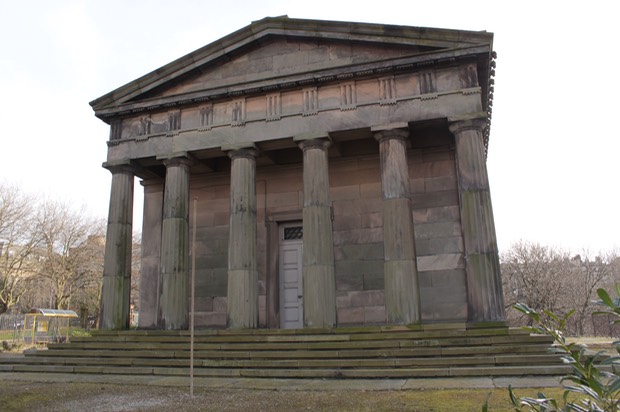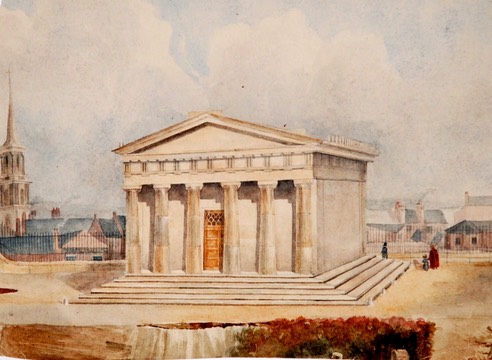
The Oratory is the former chapel of St. James's cemetery, and was designed by John Foster ( 1786 - 1846) The foundation stone being laid in 1827 by Jonathan Brooks, the Rector of Liverpool. He said:-
"On the spot where we now stand, will soon arise a specimen of the purest era of Grecian art...long to remain a monument no less of the piety of the age that erected it, than of the classical purity of taste in the architect who designed it. It will posses all those beauties which were characteristic of the noblest, as it was the earliest, invention of the building art - grandeur, simplicity and harmony, united with that degree of ornament with which true taste refines and dignifies the vigorous conceptions of genius. It will be a counterpart of those beautiful and much admired temples of the most polished nations of antiquity: not, indeed, to be applied for the same purposes as they were...but to be devoted to the pure, and simple, and chaste, and impressive services of reformed Christian worship”
The purpose of the Oratory was to accommodate funeral services before burials took place in the cemetery, but it was also used as a kind of cenotaph for housing monuments to the deceased, including works by several noted 19th century sculptors.
The Oratory and several of the monuments it contains are products of the artistic movement known as Greek Revival. In adapting the design of an ancient temple to serve as a 19th century church, architects were usually obliged to make compromises for practical reasons. Windows, for example, which were absent in Greek Temples, were needed, as were the elaborate furnishings required for Christian Worship.
Because of the limited function of the Oratory, Foster was largely free of these constraints and could design a mostly perfect recreation of a classic temple, furnished only with simple pews and a lectern. Most important, the interior was small enough to be lit by a skylight in the roof, leaving the side walls free of window openings in a truly Greek manner and giving the building a solemn severity appropriate to it's purpose.
Following the closure of the cemetery in 1936 the Oratory fell into disuse. Its responsibility fell into the hands of the Cathedral Building Committee until 1980 when it was handed over to Merseyside County Council.
Today this small building powerfully evokes the characters and achievements of some of Liverpool's notable citizens from the time of the city's great expansion and prosperity.

A Watercolour, very kindly donated by John Roberts, of the Oratory, drawn from a rare angle. John came accross this image in a collection of watercolours he bought at auction. The Artist here is George Pickering (1794 - 1857). He exhibited at ‘The Old Watercolours Society’ in London and at The Liverpool Academy.
Most images of the Oratory have the cemetery in the background, this one has the buildings in St Georges Square.
___________________________________________________________________________________________________________________
Further Reading
1. An invitation to the laying of the foundation stone in 1827. Kindly supplied by David Borrill
____________________________________________________________________________________________________________________
Page Last Updated